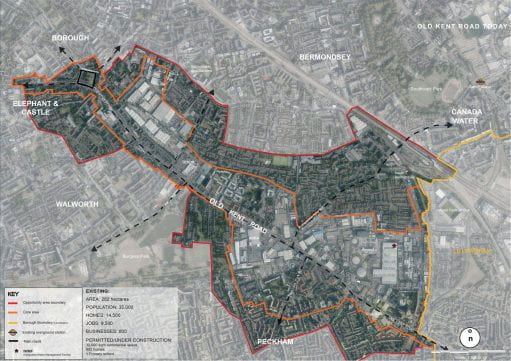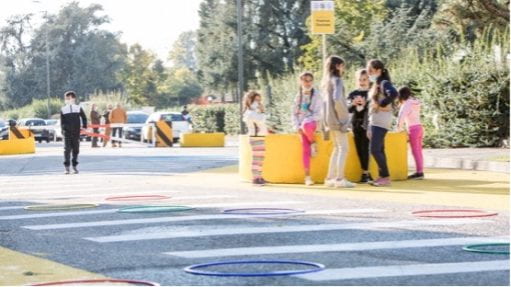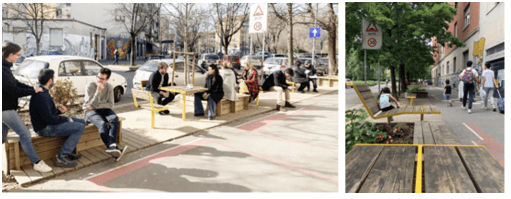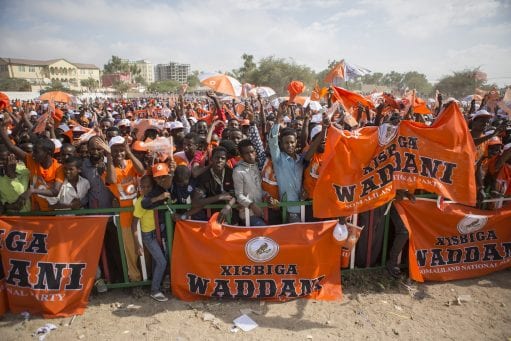Exploring the public role of a Global University: Reflecting on the potential of embedded learning alliances in promoting planning justice
By Debayan Chatterjee, on 15 August 2023
Authors: Chauncie Bigler, Yuka Aota, Debayan Chatterjee, Corin Menuge (Graduates of MSc Urban Development Planning, Bartlett DPU, UCL)
Introduction
In the Autumn of 2019, a group of MSc Urban Development Planning students partnered with community groups in London’s Old Kent Road (/OKR) Neighbourhood to explore the potential of social audits as a tool for just urban transformation in the city. As part of the multi-year teaching partnership, our group had a specific objective of collaboratively designing a social audit tool with local community groups in OKR area. The purpose of this exercise was to both test the concept of social audits in London planning whilst also supporting community groups in the gathering of data on neighbourhood assets that held significant value for locals. At that time, interrupting the speculative real estate development planned for what had become a London ‘Opportunity Area’ (See Figure 1) was a key priority for the long-term residents, businesses and other groups in the area.
In July of 2021, almost two years later, we reached out to a highly-engaged community resident who had been involved in the 2019 engagement. Our intention was to ascertain whether the social auditing toolkit we had designed was still in use and, if possible, to compare its application in both a pre-pandemic and mid-pandemic context. This resident explained that the pandemic had sharpened the priorities of community organisers and those demanding more participatory development across London: “What we want is a plan B, in light of these huge changes in the last 18 months. We want a realistic appraisal of where things are at for the people who live here” (Community resident, 21 Aug 2021).
This experience of revisiting our research partnership after two years–and a global pandemic–later caused our group to reflect further on both our positionality as researchers and practitioners, and the role that academic partnerships such as ours may have in relation to the underlying goal to leave lasting and positive community impacts. Mere months after coproducing research with community activists – the COVID-19 pandemic shifted the ground upon which priorities and strategies would be developed. As is common with planning praxis, all parties active in fighting for just planning in London, or globally, needed to reflect and react in order to move forward in highly changeable circumstances. Learning alliances such as the one we were engaged in must adapt, even in a global pandemic.

Figure 1: Old Kent Road opportunity area (Source: Southwark Council)
Revisiting Prior Engagement
Revisiting our study, the local groups see the multidimensional barriers of realising meaningful participation in planning. Many scholars (Fainstein, 2010; Healey, 2005) have tried to improve the UK’s institutionalised public participation system by highlighting the potential of a collaborative approach in planning and local governance. However, communities have continued to face difficulties in reflecting their insights on the OKR regeneration plan, such as when they could not attend in-person consultations due to COVID-19 pandemic impacts. Thus, this situation can lead to dominant decision-making over a particular plan (Arnstein, 1969). Community participation requires both Invited and Invented spaces (Miraftab, 2004). Invited spaces involve local authorities engaging with and integrating diverse perspectives during the initial phases of planning, acknowledging the value of individuals’ insights and experiences as future end-users (Ball, 2004). However, effective community participation also demands autonomous, Invented spaces for community knowledge development and counter-planning. Indeed the two should work iteratively.
Just Space, an informal alliance comprising approximately 80 community groups, is dedicated to amplifying local voices and perspectives from grassroots levels up to London’s major planning strategies. In their “Community-Led Plan for London” (Just Space, 2013), the alliance proposed to metropolitan planning authorities the adoption of Social Impact Assessments (SIAs) as a fundamental basis for making planning decisions. SIAs are essential in evaluating the potential impact of development proposals on existing residents and businesses within a neighbourhood. Recognizing the historical shortfall in communication and genuine participation, the Just Space network has been advocating for the incorporation of these impact assessments within borough and metropolitan planning frameworks to secure a more community-led planning process.
Later on, Just Space collaborated with faculty at the DPU to initiate a multi-year project, which our group joined in 2019. During our cohort’s involvement, we were briefed on the displacement pressures arising from the Old Kent Road’s designation as an Opportunity Area. Our primary task was to engage in propositional work: co-creating a “social audit” tool in collaboration with local communities. Social audits serve as a means to establish an evidence base that reflects the neighbourhood assets as perceived by community members. These audits are a part of the broader concept of Social Impact Assessments (SIAs), a tool which seeks to materialise a more ‘just city’ (Fanstein in Yiftachel and Mandelbaum, 2017). The overarching objective of SIAs is to empower community members to visualize and address spatial inequalities in their surroundings.

Figure 2: Social Audit Handbook prepared for the residents of Old Kent Road opportunity area (Source: Author)
Drawing on interviews with community members and field research, the social audit handbook (See Figure 2) was designed to be a pre-emptive, modular, adaptable and reflexive toolkit for communities. The handbook visually shows the process for identifying local assets, collecting data, and seeking further support to protect what is valued by the community in the face of development. The handbook starts with contextual data on Old Kent Road and provides guidance on community goal-setting using existing data and the voices least likely to breach traditional planning approaches. Four types of community assets (green infrastructure, housing, social/community spaces and economic infrastructure) were showcased as data collection categories based on field research and interviews with Just Space (See Figure 3). The final section emphasises the significance of visualising local data and seeking options to deliver community needs (See Figure 4).

Figure 3: Different community assets identified for the Social Audit Handbook (Source: Author)

Figure 4: Social Audit Handbook demonstrating the data collection process (Source: Author)
At the time of this action-research collaboration in 2019, the social audit handbook received positive feedback from the Old Kent Road activists and groups engaged in its coproduction. The exercise was also good practice for the budding urban development planners in our group. As students, we developed collaborative listening skills through rounds of interviews with residents, local business owners, and non-profit workers, as well as countless learning site walks. The research that underpinned the design of the tool involved an examination of best practices from social audit initiatives in different locations such as South Africa, Israel, and London. This exploration deepened our understanding of social practices within diverse contexts. The benefits to us as researchers were clear and immediate – but what about longer-term outcomes for the community groups and individuals who gave their time and insights to the work?
All components of the social audit handbook were designed according to the interpreted needs of communities at the time, yet since its original production so much has changed. Begging the question, how relevant does the tool remain in a post-COVID moment?
As one community resident noted in 2021, the city’s priorities shifted due to COVID related financial constraints. The Bakerloo line extension, upon which the original plan rested, has been effectively stopped ‘indefinitely’. What does this mean for the OKR? Perhaps counter intuitively, this withdrawal of committed public investment, combined with new local leadership within the Borough’s controlling Labour Party, could open an opportunity to achieve a more just development trajectory for OKR.
However, if this opportunity is to be realised and a Plan B is to emerge, then tools such as the social audit tested in pre-pandemic conditions may gain renewed relevance. Indeed, given that our 2019 research demonstrated how the aspiration to protect local assets is most impactful in the earliest stages of planning process, a social audit tool feels particularly salient. Rather than attempting to influence plans at a planning application stage when many decisions have already been locked in, a social audit would reflect community priorities and identify valued networks, local heritage, businesses, and public spaces as plans are being made and well before applications and capital investment arrive at the community’s door.
Principles for Strengthened Academic Partnerships

Figure 5: Academic-civil society co-production (Source: Author)
Through this retrospective re-examination of a project, the group synthesised three key themes which can prompt further examination by parties hoping to engage in academic-civil society co-productions and learning alliances:
(a) Barriers to collecting local information
Residents often face barriers when trying to access planning-related data and information about ongoing urban development in their neighbourhoods. While the toolkit outlines steps for data collection and visualization of community assets and needs to present to the government, updating it for longevity should include a clearer roadmap to overcome technical skill barriers. This might involve providing support for accessing and interpreting open-source community data for those with minimal formal training, suggesting low-cost programs for basic mapping and document creation, and offering straightforward project management and budgeting templates. Encouraging community members to assess their key skills related to social audits and formulating partnerships with students or business owners to address gaps could be a preliminary step. Nurturing interactions for creating living documents by connecting relevant information with residents requires time and planning. Despite community members’ superior knowledge of their needs, neighbourhood histories, and dynamics compared to decision-makers, capacity-building and skill-sharing are essential steps for promoting effective social audits or community-led plans.
(b) Ensuring Continuity of Moment-Driven Work within a Context of Rapid Change
The government can change urban development plans suddenly, making it difficult for communities to formulate interventions aligned with the government’s timeline and request them to amend formal plans. Thus, communities learn to respond rapidly to changes in local dynamics and political priorities, and learning alliances must also face this reality. Some of the ways that the DPU-Just Space learning alliance (See Figure 5) ensures continuity while continually adapting are by building multi-year partnerships, retaining faculty engagements around them, and designing new projects each year based on priorities from partners. The UDP cohort that followed ours (2020-21) first contributed to Just Space’s Community-led Recovery Plan for London and later shifted their attention to Southwark, where they examined the utilization, challenges, and potential of public land. This latter project connected with some of the community groups and ideas that emerged from the social audit work conducted previously. As seen in this example, COVID-19 revealed amplified inequalities of the people’s lives and has mobilised or reanimated a number of initiatives targeting alternative development visions for London. This project demonstrates a strong example of building on previous efforts while coping with changing circumstances, such as those presented by COVID-19. Under the guidance and direction of UDP faculty and with continual input from the learning alliance’s partners, later cohorts continue to support long-term attempts to promote community-led planning in the city.
(c) Structuring the Engagement for Mutually-Beneficial Outcomes
A key organising skill employed by the most successful activist groups is never-ending creativity in the face of changing circumstances. Activists must adjust their strategies and efforts in order to seize opportunities as they come. This hard-earned skill-set can be even less straightforward to apply to an academic setting. Academia, even when a strong ethos of practice in community engagement is present, must balance adaptability with the structure needed for executing a project within a fixed academic term in a classroom setting.
The task of structuring academic co-production processes is not straightforward, and creative ways to extend the work could be explored to maximize what both the community and the students take forward from the engagement. For example, rather than attempt to theoretically frame, develop and part pilot a tool all in one term, the learning alliance could be split into curricula and extra-curricular components with students given the opportunity to continue their engagement with the project’s community partners after the completion of the assessed project. In the case of our project, such an approach could have allowed time for a more in-depth piloting and testing phase. Through that further coproduction moment, additional findings would surely surface from the community on its design, such as local capacity to collect and take forward the fact-based data, which would provide even more support towards sustainable realisation of the community’s needs. That said, given such an approach relies on voluntary capacity and will, there is a small risk that momentum wains without the incentive of assessment.
Conclusion
During the autumn academic term of 2019, our cohort of 11 UDP students actively immersed themselves in the Old Kent Road project, forging connections between academic theory and practical application. Through engaging with community leaders and collaborating closely with community groups and Just Space members, the cohort shaped the framework and toolkit. Student groups navigated the intricate local political landscape, stakeholder dynamics, Social Impact Assessments (SIAs), planning procedures, and inclusive engagement approaches. UCL, as a global university, sends its Master’s graduates into diverse sectors worldwide. Our cohort’s immersive experience enriched subsequent chapters of our journeys: from supporting grassroots initiatives at the Japanese Embassy in New Delhi, to a role as an Urban Designer in Dubai and Germany, Green Infrastructure Planner in the U.S., and a contributor to London’s social housing sector. While challenging to quantify, the impacts of such alliances extend beyond classroom walls and the Old Kent Road. Academic research underscores the notion of ‘seeding’ hope for communities grappling with injustices by both recognising and amplifying their campaigns and also nurturing a new generation of planning practitioners attuned to the diverse needs and aspirations of cities worldwide.
The multiyear learning collaborations between UCL and community groups emphasize the pivotal role of community planning and the potential to transmit the principles of socially just planning to the succeeding cohort. By introducing the social audit handbook to communities, we supported Just Space in testing a responsive tool aligned with the community’s strategies within specific times and conditions as well as amplifying an idea whose time may yet come. This endeavour aimed to integrate a degree of procedural justice into practice by transforming environmental governance through inclusive engagement that values diverse voices and perspectives (York and Yazar, 2022). It’s crucial to acknowledge that existing communities are integral participants in regeneration, capable of enhancing their neighbourhoods, and the outcomes of their collective efforts can ripple throughout the entire city (Ball, 2004). Tools like the social audits we examined can serve as valuable documentation of neighbourhood changes and shared lessons, facilitating action planning for like-minded communities and organizations. Nevertheless, as exemplified by disruptions caused by the COVID-19 pandemic, what holds greater resilience than specific tools are the skills cultivated in response to the inherent complexities of multi-stakeholder engagement in development planning. Primarily, this involves the ability to be adaptable and strategic in action planning, consistently reassessing the scope for manoeuvring (Safier, 2002) toward community objectives.
Reference
Arnstein, S.R. (1969). ‘A ladder of citizen participation’, Journal of the American Institute of planners, 35(4), pp.216-224.
Ball, M. (2004). ‘Co-operation with the community in property-led urban regeneration’, Journal of Property Research, 21:2, pp.119-142, DOI: 10.1080/0959991042000328810.
Fainstein, S. (2010). The Just City, Ithaca, NY: Cornell University Press.
Healey, P. (2005). Collaborative Planning (2nd ed.), Basingstoke, Macmmillan.
Just Space (2013). Towards a Community-Led Plan for London Policy directions and proposals. [online]. Available at: https://justspacelondon.files.wordpress.com/2013/09/just-space-a4-community-led-london-plan.pdf.
Langlois, A. (2023). ‘TfL Bakerloo line extension, Southwark to Lewisham: Part of tunnel design work restarted’. LondonWorld. National World Publishing Ltd, 1st June 2023. [online]. Available at: https://www.londonworld.com/news/traffic-and-travel/tfl-to-restart-part-of-tunnel-design-work-for-bakerloo-line-extension-4077412.
Safier, M. (2002). ‘On Estimating Room for Manoeuvre’, City, 6(1). pp.117-132.
Yiftachel, O. and Mandelbaum, R. (2017). ‘Doing the Just City: Social Impact Assessment and the Planning of Beersheba, Israel’, Planning Theory & Practice, 18 (4). pp.525-548.
York, A. and Yazar, M. (2022).’Leveraging shadow networks for procedural justice’, Current Opinion in Environmental Sustainability, Vol.57. Available at: https://doi.org/10.1016/j.cosust.2022.101190.
Bio Statement:
This group reflection comes from four DPU alumni from the 2019-2020 Urban Development Planning cohort, on the work Social Impact Assessment as a tool for Just Planning in Southwark, London. Yuka, Chauncie, Debayan, and Corin are now in four different parts of the world (India, USA, Germany, and the UK, respectively) working within differing sectors, all engaging with the core themes from this community-led planning practice module in some capacity. The group thanks the module leaders, Tim Wickson and Barbara Lipietz, and countless community organizers past and present for the ability to participate in this work.
 Close
Close























































